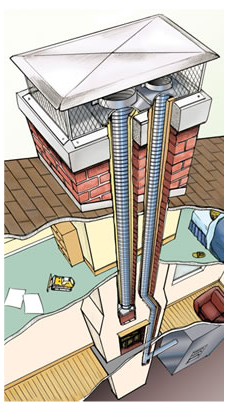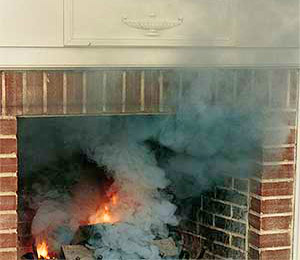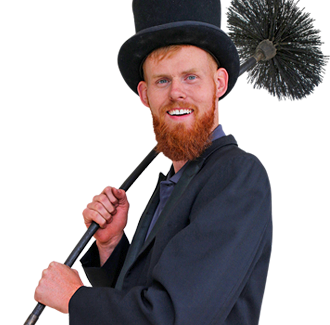Tips on Achieving a Chimney System that Operates Perfectly
 When a chimney works the way it’s supposed to, combustion gases from fireplaces and wood stoves go up the chimney and out-of-doors virtually 100% of the time. This may come as a surprise to many homeowners today who have come to believe that a smoky fireplace or wood stove is the norm. The way modern homes are built to be tightly sealed, negative air pressure is a natural result; and it disrupts chimney drafting. To achieve top chimney efficiency, it’s essential to focus on the chimney system from the floor up when it is being built.
When a chimney works the way it’s supposed to, combustion gases from fireplaces and wood stoves go up the chimney and out-of-doors virtually 100% of the time. This may come as a surprise to many homeowners today who have come to believe that a smoky fireplace or wood stove is the norm. The way modern homes are built to be tightly sealed, negative air pressure is a natural result; and it disrupts chimney drafting. To achieve top chimney efficiency, it’s essential to focus on the chimney system from the floor up when it is being built.
For a chimney that operates flawlessly, do not build it on an outside wall. Without the benefit of added insulation within the walls of the home, a cold column of air fills the chimney in wintry weather. Rather than allowing combustion gases to rise, the cold air pushes downward. It is more difficult to get a fire going when this happens, and smoke is pushed into the room. When you place the chimney within the building envelope, the chimney will not become filled with cold air to the same extent. If air in the chimney is going to move up and out quickly, the chimney must be properly insulated.
The height of the chimney also determines the effectiveness of the chimney draft. No part of the roof should be higher than the chimney. Wind flow obstacles should also be considered when determining the height of the chimney that will best produce a strong draft.
To avoid dealing with strong winds that create frustrating downdrafts, install a chimney cap or chimney topper on the chimney.
Another important component to a great chimney system is that there is a straight path to the wood stove or fireplace. Flow resistance of combustion gases is created when a chimney is offset or changes direction.
For a wood stove or fireplace insert to operate correctly with a strong draft in the chimney, it’s essential that the flue be the appropriate size, according to manufacturers’ instructions. The connection must also be properly sealed, so that there is no leakage.
Wood stoves and fireplace inserts that are certified by the Environmental Protection Agency (EPA) are available with different features, and one desirable characteristic to look for in a low emission appliance is smoldering prevention. Because smoldering firewood is a common cause of back drafting, this is a recommended feature.
Appliances should be operated and maintained properly, to keep the chimney working as it should.
 Houses today are tightly sealed; but for the chimney draft to be strong, the home must have a balanced ventilation system. Exhaust-only ventilation systems and large exhaust fans are two features that tend to overly depressurize a home and therefore also tend to prevent adequate chimney ventilation.
Houses today are tightly sealed; but for the chimney draft to be strong, the home must have a balanced ventilation system. Exhaust-only ventilation systems and large exhaust fans are two features that tend to overly depressurize a home and therefore also tend to prevent adequate chimney ventilation.
Even if a chimney is built with optimal features that ensure a strong draft, other problems can occur that affect the draft. One of the main causes of an obstructed chimney is a buildup of creosote and soot. Every time a fire burns, creosote is deposited in the flue lining; buildup is unavoidable. The type of firewood you burn affects how much creosote buildup occurs. Burning green, unseasoned firewood creates more particulate matter and more creosote buildup than burning dried or seasoned firewood.
If you need creosote removed from your chimney or if you want help determining why your chimney doesn’t operate properly, contact our chimney professionals. We can help you maximize the efficiency of your chimney.








